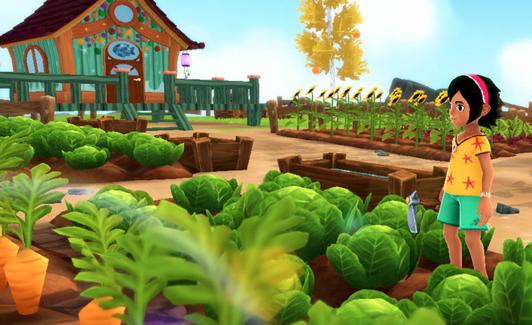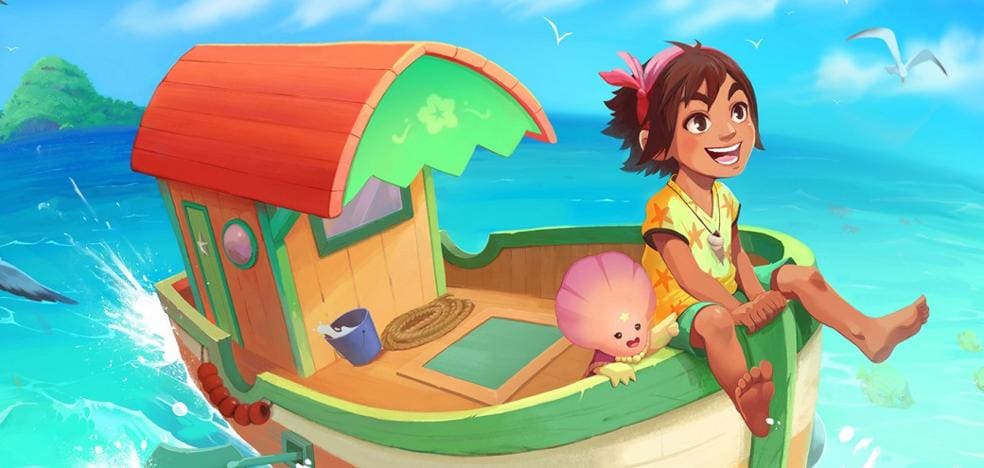If you are the type of player who loves to escape the real world by harvesting, collecting and building for hours in games like ‘Stardew Valley,’ Harvest Moon ‘or’ Animal Crossing ‘keep reading, because surely you will be interested to know what it is about’ Summer in Mara ‘. The latest from the Valencians Chibig Studio It is now available on both PC and major desktop consoles.
At the beginning of last year, the Spanish study announced the opening of a financing campaign for its most ambitious project, Summer in Mara, a new adventure with exploration and survival elements focused on farming and crafting mechanics. Community support was immediate and, in less than a month, the initiative was supported by more than seven thousand users, reaching the figure of 190 thousand euros (900% of its initial goal). Truly surprising numbers, which have made the project the third most successful Spanish Kickstarter in history.
Definitely, a less promising start, which sets the bar very high for this indie development team that has faced not-so-good reviews in the past. And it is that his previous creation, ‘Deiland’, a peculiar role-playing and adventure video game inspired by the Little Prince, suffered certain disadvantages in terms of gameplay that silenced the good reception it had from the public. Let’s see now if Chibig has known how to seize the opportunity and if his proposal manages to rise as a true alternative in the genre of farm management and crafts.
And Summer in Mara we will meet Koa, a little adventurer whose dream is to explore the world around her. While still a baby, during one night, Koa is rescued from a severe storm at sea by a long-lived sea creature named Yaya Haku. Being orphaned, the old woman Haku decides to take care of Koa and raise her on a small tropical island in the insular kingdom of Mara, where she teaches her everything about nature and its gifts, as well as how to take advantage of all the resources that it offers. .
Thus, we will start with a tutorial in which Yaya will help us to get to know our island and will explain some basic concepts so that we can be self-sufficient. This is, cultivation of fields, irrigation, fertilization, fruit picking, tree felling and planting, mineral extraction, fishing… In addition, we will visit some unique places in Mara, such as a secret door that is always kept closed or the two statues of the guardians of the mountain.
One day, unexpectedly, his amphibian foster mother disappears without a trace and Koa discovers that the ocean of Mara and the entire planet Qü are in danger, so she will be driven to undertake her own journey. You will not only learn about the secrets of the world of Mara but also discover more about her past.
With endless unknowns and unsolved mysteries, we will enter Summer in Mara to reveal, slowly and gradually, a warm, beautiful and exciting story, which revolves around growth and empathy and which will transmit to us the values of friendship and respect for the environment.
In terms of playability, Summer in Mara offers what it promises: an experience that mixes life simulation, resource management and exploration. Three elements that, although they converge in their most simplified version with respect to what is seen in other titles, combine perfectly in a simple and fluid balance. Controlling Koa in the third person, we will eat and sleep, we will till the fields and break stones, we will swim and fish and we will progressively learn to make our own tools, cook and even build small huts where we can protect the animals. At the same time, we will explore with a humble little boat the dozens of islands and towns that make up Mara and we will meet the peculiar beings that inhabit them.
The many NPCs that we will encounter will be entrusting us quests, mostly search and gathering, and they will guide us in our search for the truth about who we really are, what a bad threat Qü and what has happened to Yaya Haku. Thus we will advance in Summer in Mara, without fights or violence, just surviving and exploring island by island a world that challenges us to investigate and encourages us to progress and improve as farmers.
In part, this is due to the good work Chibig did on the technical side. Because yes, Summer in Mara is far from brilliant in this regard, but let’s not forget that, despite everything, it is still an independent work. With its artistic design the title manages to attract attention. The graphics and textures don’t have the highest resolution, but the colorful scenes and modeling recreate truly beautiful and pleasant surroundings. In addition, the cutscenes are made up of short animated scenes with a large anime-style drawing, clearly inspired by the Studio Ghibli movies.
However, this charming presentation also has its weak points, such as the menu design and user interface, which feels incomplete and in which more information on tools and options is missing that we can use. In the same way, we would have liked to see a greater care in the animations both of Koa, with some very unnatural movements and actions, as in most of the secondary characters, too expressionless and whose voice dialogues are limited to guttural sounds that are overlap over lines of text.
The soundtrack, meanwhile, is even more beautiful and charming that the visual component and is sometimes interspersed with stages of musical absence in which silence and the sounds of nature are the only melody.

Our valuation
Summer in Mara is an adventure of exploration and survival where obtaining resources, agricultural management and crafting are the protagonists. Although it manages to perfectly combine and balance all these elements, the obvious limitations of its development, its simplified mechanics and some imperfections in the finish, place the title in the second line of a genre that is too competitive.
On the other hand, its precious artistic section and its endearing history focused on self-knowledge, personal values and caring for nature make it a very interesting and recommended title, especially for children.
–
– .


